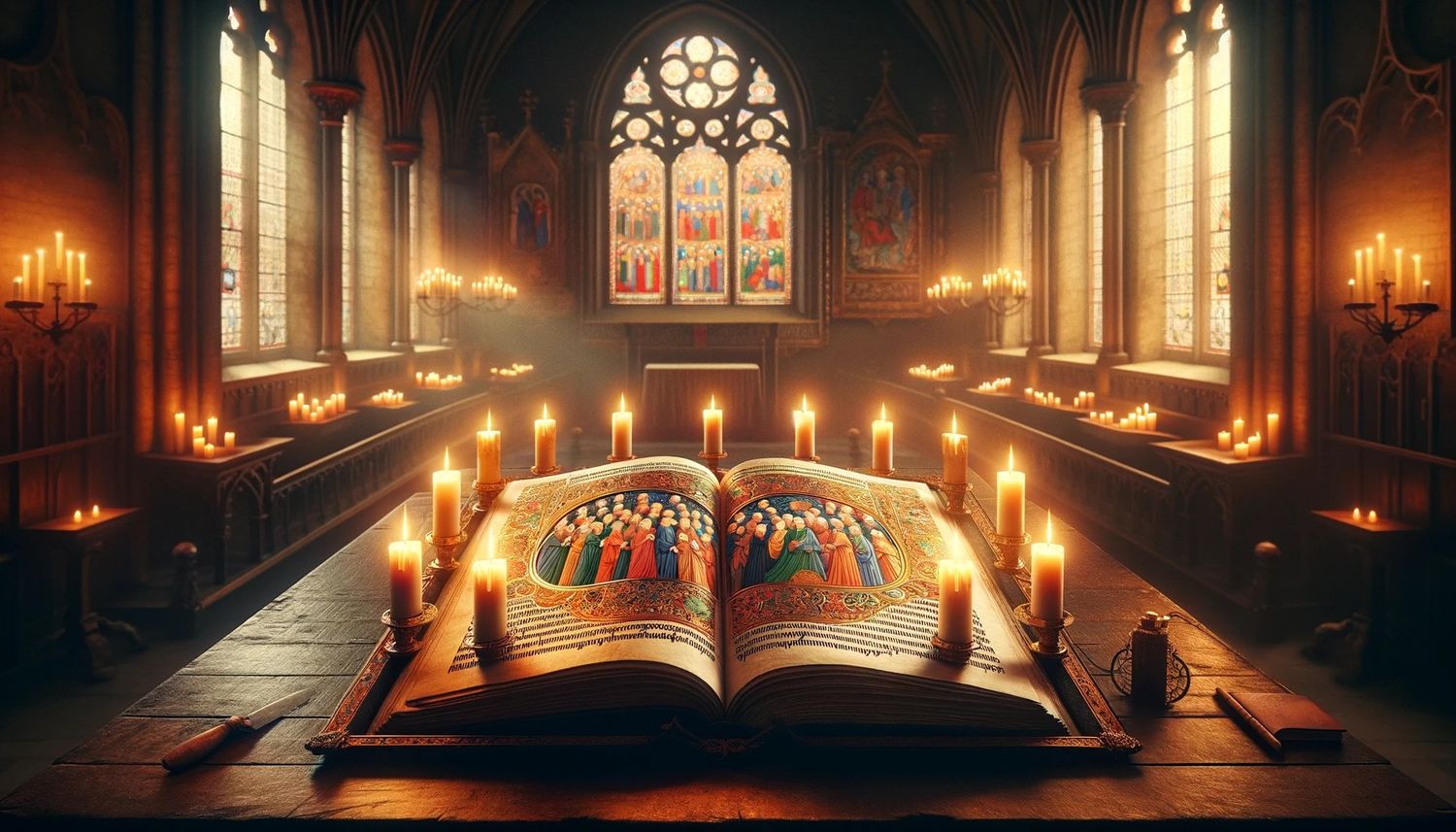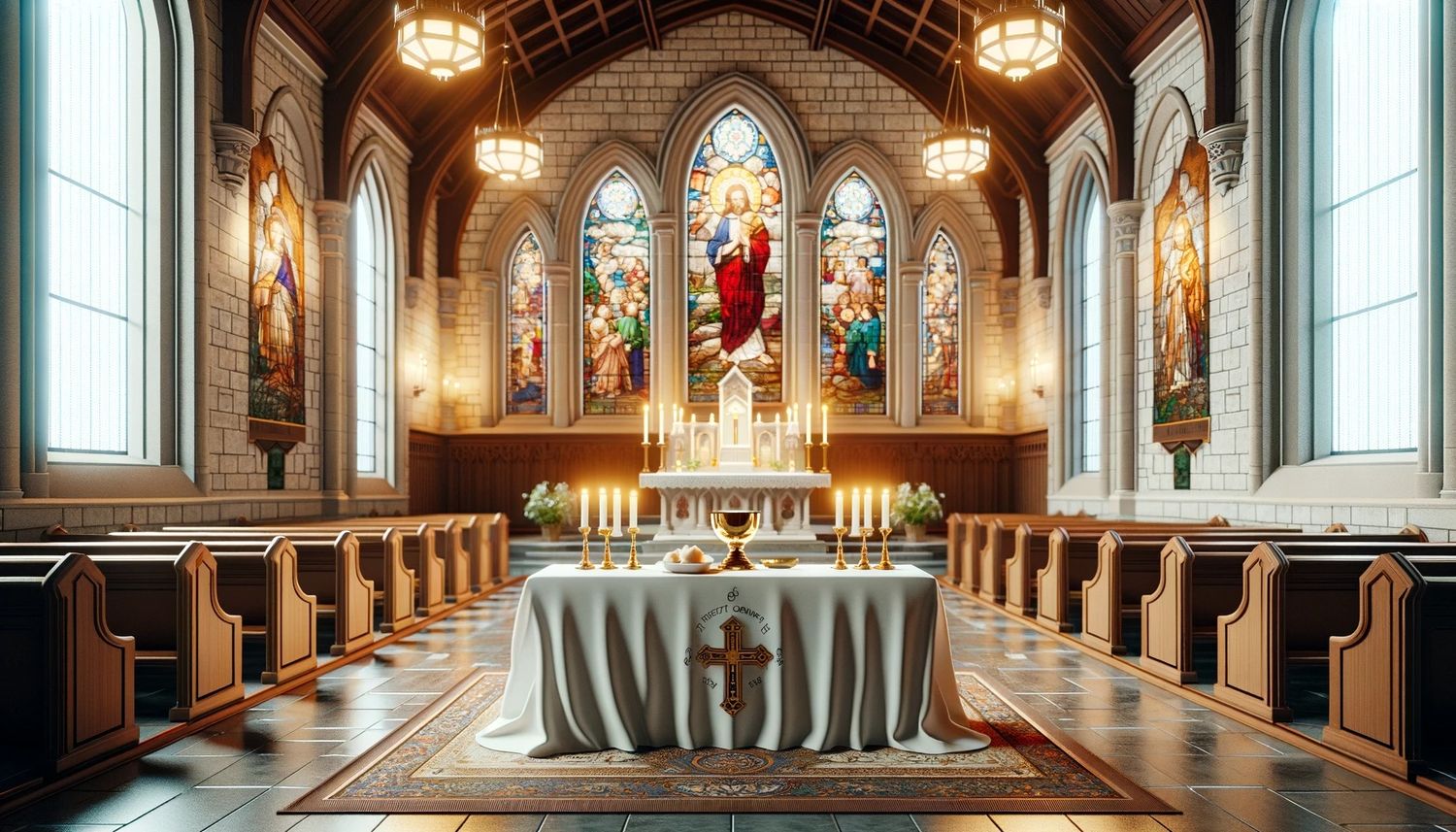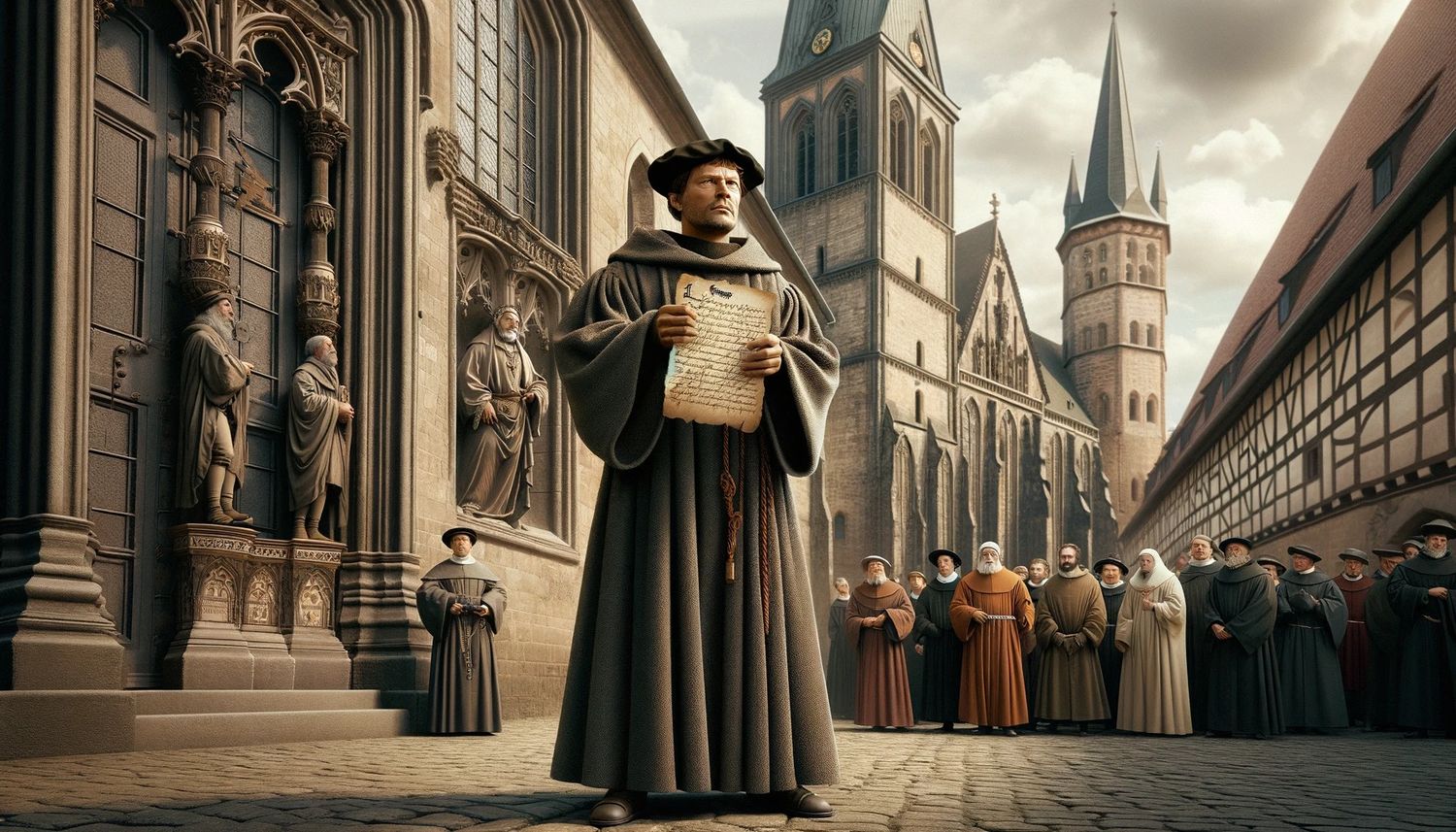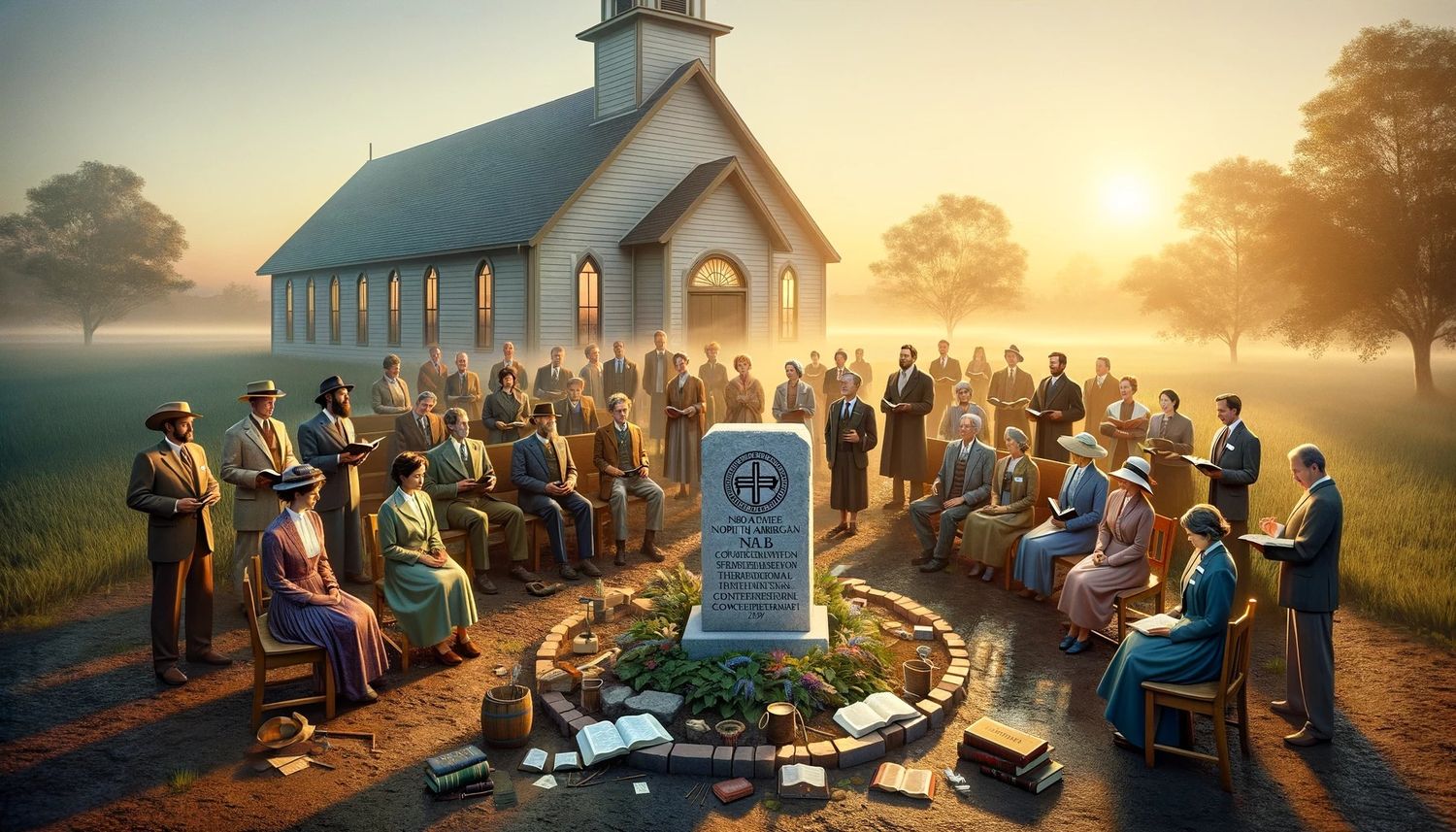Home>Theology and Spirituality>What Are The Church Years For Lutheran Church
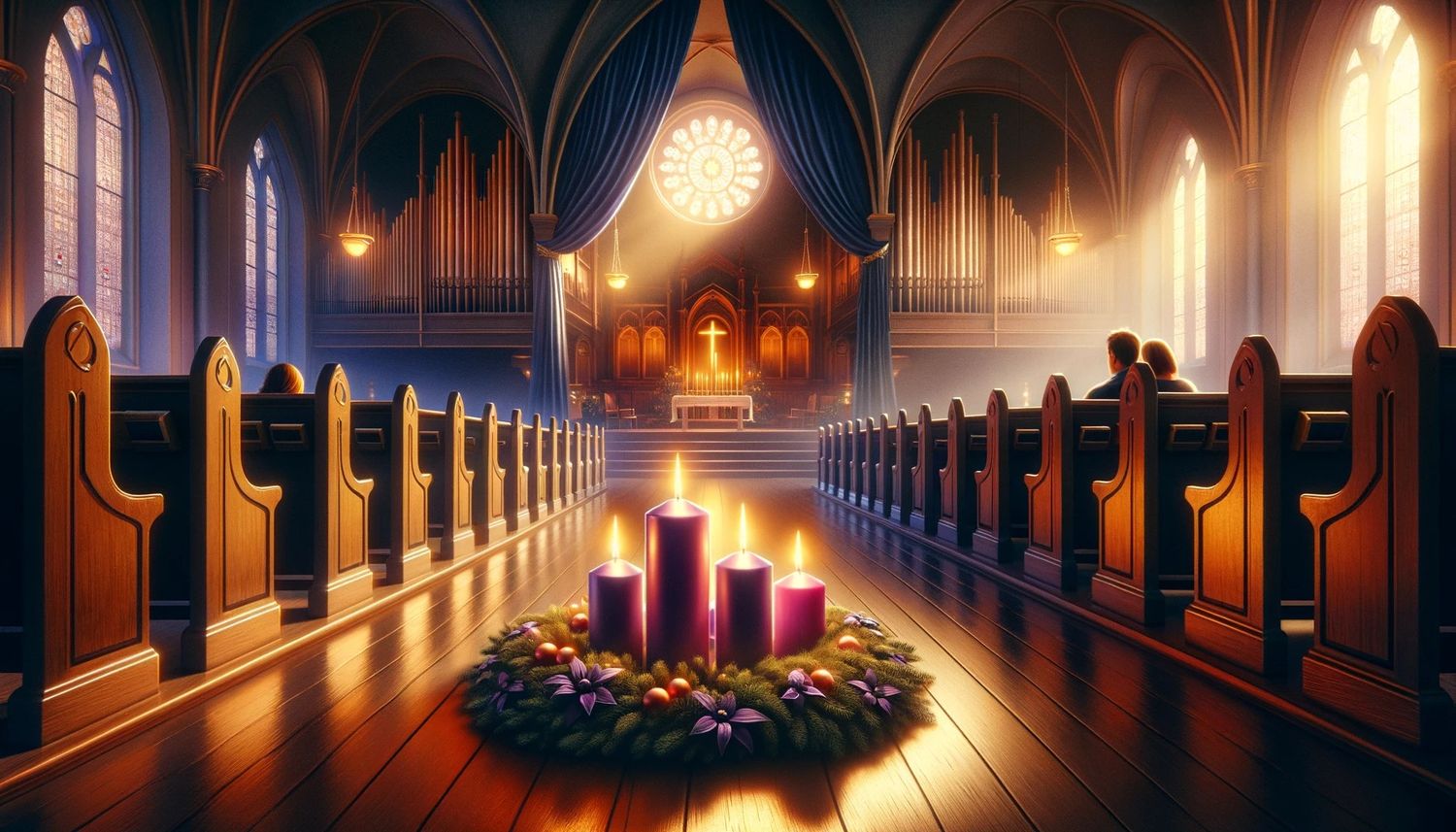

Theology and Spirituality
What Are The Church Years For Lutheran Church
Published: March 3, 2024
Ericka Andersen, an editor at Christian.net, expertly merges digital strategy with content creation, focusing on faith and societal issues. Her communication skills enhance the platform's engaging narratives, fostering meaningful dialogue on belief's impact on society.
Discover the significance of the church years for Lutheran Church and their impact on theology and spirituality. Explore the rich traditions and practices that shape the faith journey.
(Many of the links in this article redirect to a specific reviewed product. Your purchase of these products through affiliate links helps to generate commission for Christian.net, at no extra cost. Learn more)
Table of Contents
Introduction
The Church Year, also known as the Liturgical Year, is a series of seasons and festivals observed by many Christian denominations, including the Lutheran Church. It serves as a way to commemorate and relive the life of Jesus Christ and the events of salvation history. The Church Year is a significant aspect of Lutheran worship and spirituality, providing a framework for the annual rhythm of Christian life. In this article, we will explore the various seasons and celebrations that make up the Church Year for the Lutheran Church, shedding light on their significance and how they are observed within the faith community. Let's delve into the rich tapestry of the Church Year and its importance in the Lutheran tradition.
Read more: What Is The Lutheran Church
The Liturgical Calendar
The Liturgical Calendar, also known as the Church Year, is a cyclical schedule of seasons and celebrations that mark the life of Jesus Christ and the history of salvation. For the Lutheran Church, the Liturgical Calendar serves as a guide for worship, prayer, and reflection throughout the year. It begins with the first Sunday of Advent, which marks the start of the new liturgical year, and is divided into several distinct seasons and festivals, each with its own unique significance and focus. The Church Year provides a framework for the spiritual journey of believers, guiding them through the story of redemption and inviting them to participate in the life of Christ through the rhythm of the seasons.
The Liturgical Calendar is a visual representation of the narrative of salvation, allowing Lutheran Christians to immerse themselves in the key events of Jesus' life, from his birth and ministry to his death, resurrection, and ascension. It also encompasses the outpouring of the Holy Spirit at Pentecost and the ongoing growth of the Church in the season of Ordinary Time. Each season of the Church Year offers a distinct theme and set of readings, prayers, and rituals that help to shape the faith and practice of the Lutheran community.
The Church Year is not only a way to mark time; it is a means of spiritual formation and discipleship. Through the observance of the seasons and festivals, Lutheran Christians are invited to enter into the mystery of Christ's life and to reflect on the implications of his saving work for their own lives and the world around them. The Liturgical Calendar provides a rhythm of worship and devotion that connects the past, present, and future, grounding believers in the timeless truths of the Christian faith and orienting them toward the hope of Christ's return.
In summary, the Liturgical Calendar is a foundational aspect of Lutheran spirituality, shaping the worship, prayer, and theological reflection of the faith community. It offers a rich tapestry of seasons and celebrations that invite believers to journey through the story of salvation, deepening their faith and fostering a sense of connection to the larger body of Christ. The Church Year is a living tradition that continues to speak to the hearts and minds of Lutheran Christians, guiding them in their walk with God and their witness to the world.
Advent and Christmas
-
Advent: Advent marks the beginning of the Church Year and is a season of anticipation and preparation for the coming of Christ. It typically starts on the fourth Sunday before Christmas and lasts until Christmas Eve. During Advent, Lutheran congregations engage in special liturgies, hymns, and rituals that focus on the themes of hope, peace, joy, and love. The Advent wreath, with its four candles representing each week of the season, is a prominent symbol used in Lutheran churches to mark the progression toward the celebration of Christ's birth.
-
Christmas: Christmas is the joyful culmination of the Advent season, celebrating the birth of Jesus Christ. For Lutheran Christians, Christmas is a time of worship, feasting, and fellowship, as they gather to commemorate the incarnation of the Son of God. The observance of Christmas in the Lutheran Church is marked by special services, including the traditional Christmas Eve candlelight liturgy and the singing of beloved carols that proclaim the good news of Christ's birth. The season of Christmas extends beyond December 25th, encompassing the twelve days leading up to Epiphany, during which the significance of Christ's birth is further explored and celebrated.
-
Significance: Advent and Christmas hold profound significance in the Lutheran tradition, as they remind believers of the fulfillment of God's promise to send a Savior and the dawning of the light of Christ in the world. These seasons invite Lutheran Christians to reflect on the mystery of the Incarnation and the profound implications of God taking on human flesh. Through the observance of Advent and Christmas, believers are called to renew their faith in the redemptive work of Christ and to share the message of God's love and salvation with the world.
-
Reflection and Action: Advent and Christmas also serve as a time of reflection and action, prompting Lutheran Christians to consider how they can embody the spirit of hope, peace, joy, and love in their own lives and communities. The themes of these seasons inspire acts of charity, compassion, and reconciliation, as believers seek to emulate the example of Christ's humble birth and selfless love. Through the observance of Advent and Christmas, Lutheran Christians are encouraged to embrace the message of Emmanuel, "God with us," and to live as bearers of the light and hope found in the birth of the Savior.
In summary, Advent and Christmas are integral seasons in the Church Year for the Lutheran Church, offering a time of anticipation, celebration, and reflection on the profound mystery of the Incarnation. These seasons invite believers to embrace the hope and joy of Christ's birth and to embody the message of God's love and salvation in their lives and communities.
Epiphany
Epiphany, which falls on January 6th, marks the revelation of Jesus Christ as the Son of God to the Gentiles, as represented by the visit of the Magi to the infant Jesus. In the Lutheran Church, Epiphany is a season that extends from January 6th to the Tuesday before Ash Wednesday, encompassing a period of several weeks. This season is a time of illumination and manifestation, highlighting the universal significance of Christ's birth and mission.
The Magi and the Star
The story of the Magi, or wise men, who followed a star to find the newborn King of the Jews, is central to the observance of Epiphany in the Lutheran tradition. This account, found in the Gospel of Matthew, underscores the inclusion of all nations and peoples in the redemptive work of Christ. The visit of the Magi is a powerful symbol of the revelation of Jesus to the world and the fulfillment of God's promise to bring light to the nations.
Themes of Light and Revelation
Epiphany is characterized by themes of light and revelation, emphasizing the manifestation of Christ's glory to all people. In Lutheran congregations, Epiphany is marked by special services and rituals that focus on the themes of illumination, divine manifestation, and the recognition of Jesus as the Savior of the world. The use of light, such as candles and the blessing of homes, serves as a symbolic representation of the light of Christ shining in the darkness and the revelation of God's presence among humanity.
The Baptism of Jesus
Another significant event commemorated during the season of Epiphany is the baptism of Jesus in the Jordan River. This event, recorded in the Gospels, marks the beginning of Jesus' public ministry and the revelation of his identity as the beloved Son of God. The baptism of Jesus is a powerful demonstration of God's affirmation and commissioning of Jesus for his redemptive mission, and it serves as a focal point for reflection and worship during the season of Epiphany.
Mission and Witness
Epiphany is a season that calls Lutheran Christians to embrace their mission and witness to the world. The revelation of Jesus to the Magi and the affirmation of his identity at his baptism underscore the universal scope of the Gospel and the call to share the good news with all people. In the Lutheran Church, Epiphany serves as a reminder of the ongoing mission of the Church to bear witness to the light of Christ and to extend God's love and grace to the ends of the earth.
In summary, Epiphany is a significant season in the Church Year for the Lutheran Church, highlighting the universal revelation of Jesus Christ to all people and the call to mission and witness. This season invites believers to reflect on the themes of light, revelation, and the inclusive nature of God's redemptive work, inspiring them to embrace their role as bearers of the light of Christ in the world.
Lent
Lent is a solemn season of reflection, repentance, and preparation for the celebration of the death and resurrection of Jesus Christ. In the Lutheran Church, Lent begins on Ash Wednesday and lasts for forty days, excluding Sundays, leading up to Easter Sunday. This period of forty days is symbolic of the time Jesus spent in the wilderness, enduring temptation and preparing for his public ministry. Lent is a time of spiritual discipline and self-examination, during which Lutheran Christians are called to turn their hearts toward God, confront their own sinfulness, and seek renewal and transformation through the grace of Christ.
Read more: What Is Advent In Lutheran Church
Fasting and Prayer
Lent is traditionally associated with fasting, abstinence, and intensified prayer. Lutheran believers may choose to observe fasting by abstaining from certain foods or activities as a way of focusing their attention on spiritual matters and cultivating a deeper dependence on God. The practice of fasting during Lent is not meant to earn God's favor but to create space for prayer, self-reflection, and solidarity with those who suffer. In addition to fasting, Lutheran congregations often hold special services, such as midweek Lenten services, that provide opportunities for communal prayer, meditation on Scripture, and the contemplation of Christ's sacrifice.
The Penitential Season
Lent is often referred to as a penitential season, emphasizing the themes of repentance, humility, and the acknowledgment of human frailty. Lutheran Christians are encouraged to engage in acts of self-examination, confession of sin, and the pursuit of reconciliation with God and others. The imposition of ashes on Ash Wednesday serves as a powerful symbol of human mortality and the need for repentance, reminding believers of their dependence on God's mercy and grace. The Lenten journey is a time for individuals and the faith community to confront their brokenness, seek forgiveness, and recommit themselves to lives of faithfulness and obedience.
Preparation for Easter
While Lent is a season of solemnity and introspection, it is ultimately a time of preparation for the celebration of Easter, the central event of the Christian faith. The forty days of Lent culminate in Holy Week, which includes the observance of Maundy Thursday, Good Friday, and Holy Saturday, leading to the joyous celebration of Christ's resurrection on Easter Sunday. The Lenten disciplines of fasting, prayer, and repentance serve to prepare the hearts of Lutheran believers to fully embrace the significance of Christ's sacrificial death and triumphant resurrection, as they participate in the Easter Vigil and Easter Sunday services.
Renewal and Transformation
Lent is a season that invites Lutheran Christians to experience spiritual renewal and transformation. Through the disciplines of Lent, believers are called to draw closer to God, to let go of distractions and sinful habits, and to open themselves to the work of the Holy Spirit in their lives. The journey of Lent is one of surrender and hope, as individuals and the faith community seek to be conformed to the image of Christ and to live as faithful witnesses to the power of God's redeeming love. The Lenten season is a time of preparation, purification, and anticipation, as Lutheran Christians await the dawning of Easter and the promise of new life in Christ.
In summary, Lent is a significant season in the Church Year for the Lutheran Church, offering a time of spiritual discipline, self-examination, and preparation for the celebration of Easter. This penitential season calls believers to confront their sinfulness, seek renewal through the grace of Christ, and anticipate the joy of Christ's resurrection.
Read more: What Is A Vicar In The Lutheran Church?
Holy Week
Holy Week is the most sacred and solemn period in the Church Year for the Lutheran Church, marking the final week of Lent and commemorating the events leading up to the crucifixion and resurrection of Jesus Christ. It begins with Palm Sunday, which celebrates Jesus' triumphant entry into Jerusalem, and concludes with the Easter Vigil on Holy Saturday and the celebration of Christ's resurrection on Easter Sunday. Holy Week is a time of intense reflection, prayer, and worship, as Lutheran Christians journey with Christ through the pivotal moments of his passion, death, and resurrection.
Palm Sunday
Palm Sunday, also known as Passion Sunday, commemorates Jesus' entry into Jerusalem, where he was hailed as the Messiah by the crowds waving palm branches. In Lutheran congregations, Palm Sunday is marked by the blessing of palms and a procession, symbolizing the joyful welcome of Jesus as the King who comes in the name of the Lord. The mood of celebration quickly transitions to the reading of the Passion narrative, as the focus shifts to the suffering and sacrifice that await Jesus in the days ahead.
Maundy Thursday
Maundy Thursday, also known as Holy Thursday, commemorates the Last Supper, where Jesus instituted the sacrament of the Eucharist and washed the feet of his disciples as a sign of humble service. In Lutheran churches, Maundy Thursday services often include the celebration of the Lord's Supper, the washing of feet, and the solemn stripping of the altar, symbolizing the impending abandonment and suffering of Christ.
Good Friday
Good Friday is a day of solemn remembrance of the crucifixion and death of Jesus Christ. In Lutheran congregations, Good Friday services are marked by readings of the Passion narrative, meditations on the Seven Last Words of Christ, and veneration of the cross. The atmosphere is one of deep sorrow and contemplation, as believers reflect on the profound sacrifice of Christ and the weight of human sin that led to his crucifixion.
Read more: What Are The Lutheran Church Beliefs
Holy Saturday and the Easter Vigil
Holy Saturday is a day of anticipation and waiting, as the Church prepares for the Easter Vigil, the most ancient and significant liturgy of the Christian year. The Easter Vigil begins after nightfall on Holy Saturday and includes the lighting of the Paschal candle, the chanting of the Exsultet, the proclamation of salvation history through Scripture readings, and the celebration of the first Eucharist of Easter. In Lutheran tradition, the Easter Vigil is a time of vigil and prayer, as believers await the dawn of Easter and the proclamation of Christ's resurrection.
Significance and Reflection
Holy Week holds profound significance in the Lutheran tradition, as it invites believers to enter into the mystery of Christ's passion, death, and resurrection. It is a time of intense spiritual engagement, as Lutheran Christians participate in the liturgies and rituals that reenact the events of Holy Week and proclaim the redemptive work of Christ. Holy Week serves as a poignant reminder of the depth of God's love and the extent of Christ's sacrifice, calling believers to embrace the hope and joy of the resurrection amid the solemnity of Christ's suffering and death.
In summary, Holy Week is a sacred and transformative period in the Church Year for the Lutheran Church, offering a time of deep reflection, prayer, and worship as believers journey with Christ through the events of his passion, death, and resurrection.
Easter
Easter is the pinnacle of the Church Year for the Lutheran Church, celebrating the resurrection of Jesus Christ from the dead. It is the most joyous and significant festival in the Christian calendar, marking the triumph of life over death and the fulfillment of God's promise of redemption. For Lutheran Christians, Easter is a time of exuberant worship, proclamation of the good news, and joyful fellowship as they gather to commemorate the central event of their faith.
Resurrection and New Life
The resurrection of Jesus Christ is the cornerstone of the Christian faith, affirming the victory of God's love and the promise of new life for all who believe. In Lutheran congregations, Easter Sunday is marked by festive services, including the singing of hymns of praise, the proclamation of the resurrection narrative, and the celebration of the Eucharist. The sanctuary is adorned with flowers, symbolizing the beauty and vitality of the new life found in Christ, and the atmosphere is one of jubilation and thanksgiving for the gift of salvation.
Read more: What Is A Synod In The Lutheran Church
The Empty Tomb and Proclamation
The empty tomb of Jesus stands as a powerful symbol of hope and transformation, signifying the defeat of sin and death through the resurrection. Lutheran Christians joyfully proclaim the Easter message of Christ's victory over the grave, sharing the good news of salvation with one another and with the world. The resurrection of Jesus is the foundation of the Christian faith, offering assurance of forgiveness, reconciliation with God, and the promise of eternal life for all who believe in him.
The Season of Easter
Easter is not merely a single day of celebration but a season that extends for fifty days, culminating in the feast of Pentecost. This period, known as Eastertide, is a time of continued rejoicing and reflection on the implications of Christ's resurrection for the life of the Church and the world. In the Lutheran tradition, the season of Easter is marked by the proclamation of the Easter Gospel, the renewal of baptismal vows, and the emphasis on the resurrection as the source of Christian hope and mission.
Hope and Renewal
Easter is a season of hope and renewal, inviting Lutheran Christians to embrace the transformative power of Christ's resurrection in their lives. The message of Easter inspires believers to live as people of hope, joy, and courage, knowing that the victory of Christ over sin and death has forever changed the course of human history. The resurrection of Jesus is a source of strength and comfort, sustaining believers in times of trial and empowering them to bear witness to the life-giving love of God in the world.
In summary, Easter is the central and most joyous festival in the Church Year for the Lutheran Church, celebrating the resurrection of Jesus Christ and the promise of new life and hope for all who believe. It is a time of exuberant worship, proclamation of the good news, and joyful fellowship, as Lutheran Christians rejoice in the victory of Christ over sin and death.
Pentecost
Pentecost, also known as the Feast of Weeks, is a significant festival in the Church Year for the Lutheran Church, commemorating the outpouring of the Holy Spirit upon the early followers of Jesus. The festival of Pentecost occurs fifty days after Easter and serves as a celebration of the birth of the Christian Church through the empowering presence of the Holy Spirit. In the Lutheran tradition, Pentecost is a time of vibrant worship, reflection on the work of the Spirit, and the affirmation of the Church's mission and witness to the world.
Read more: What Is A Confessional Lutheran Church
The Descent of the Holy Spirit
The story of Pentecost, as recorded in the book of Acts, describes the dramatic event when the Holy Spirit descended upon the disciples of Jesus, filling them with power and enabling them to proclaim the Gospel in diverse languages. The sound of a rushing wind and the appearance of tongues of fire symbolized the arrival of the Spirit, marking the beginning of a new era in the life of the Church. In Lutheran congregations, the account of Pentecost is read and celebrated, emphasizing the transformative impact of the Spirit's presence on the community of believers.
The Gift of the Spirit
Pentecost is a festival that highlights the gift of the Holy Spirit to the Church, equipping and empowering believers for the work of ministry and mission. The Spirit is celebrated as the advocate, comforter, and guide who enables the Church to bear witness to the love and truth of Christ. In the Lutheran Church, Pentecost is a time to reflect on the diverse gifts and ministries that the Spirit bestows upon the body of Christ, inspiring unity, service, and the proclamation of the Gospel.
The Birthday of the Church
Pentecost is often referred to as the birthday of the Church, signifying the moment when the disciples were emboldened to go forth and share the message of Jesus with the world. In Lutheran communities, Pentecost is a time to celebrate the rich diversity of the Church and to affirm the call to be a community of faith that transcends cultural, linguistic, and social barriers. The festival of Pentecost serves as a reminder of the universal scope of the Gospel and the Spirit's work in bringing about unity amidst diversity.
Renewal and Mission
Pentecost is a season of renewal and mission, inviting Lutheran Christians to be open to the ongoing work of the Spirit in their lives and in the life of the Church. The festival of Pentecost inspires believers to embrace the Spirit's guidance, to be attentive to the needs of the world, and to engage in acts of compassion, justice, and reconciliation. The Spirit's presence is seen as the source of vitality and dynamism, propelling the Church to be a transformative force in society and a beacon of hope for all people.
In summary, Pentecost is a significant festival in the Church Year for the Lutheran Church, celebrating the gift of the Holy Spirit and the birth of the Christian Church. It is a time of vibrant worship, reflection on the work of the Spirit, and the affirmation of the Church's mission and witness to the world.
Read more: What Is LCMC Lutheran Church
Ordinary Time
Ordinary Time is a distinctive and essential part of the Church Year for the Lutheran Church, encompassing the periods between the major liturgical seasons of Advent and Christmas, and Epiphany and Lent. It also includes the time between Pentecost and the beginning of the new liturgical year with the season of Advent. Despite its name, Ordinary Time does not signify a period of mundane or uneventful observance; rather, it is a time of growth, maturation, and the living out of the Christian faith in the rhythms of everyday life.
Growth and Discipleship
Ordinary Time is a season that emphasizes the growth and maturation of the Christian discipleship. It provides an opportunity for Lutheran believers to deepen their understanding of the teachings of Jesus, to cultivate spiritual disciplines, and to integrate their faith into the ordinary moments of their lives. The Sundays of Ordinary Time are marked by a focus on the teachings and ministry of Jesus, inviting believers to reflect on the implications of Christ's message for their personal and communal life.
The Green Season
The color green, symbolizing growth and vitality, is prominently used during Ordinary Time in the paraments, vestments, and decorations of Lutheran churches. This visual reminder serves as a metaphor for the ongoing growth and development of the Christian life, as believers are called to bear fruit and to flourish in their relationship with God and one another. The green season of Ordinary Time is a time of spiritual nourishment and renewal, as Lutheran Christians are encouraged to deepen their roots in the faith and to live as faithful disciples of Christ.
The Rhythm of Daily Life
Ordinary Time is a season that mirrors the ebb and flow of daily life, providing a framework for the ongoing journey of faith amidst the routines and challenges of the world. It is a time for Lutheran believers to seek God's presence in the ordinary, to find meaning and purpose in their vocations and relationships, and to be attentive to the movements of the Spirit in the midst of the mundane. Ordinary Time invites believers to embrace the sacredness of the everyday and to live as witnesses to the transformative power of the Gospel in the world.
Read more: What Is The Evangelical Lutheran Church
The Call to Mission
While Ordinary Time may lack the heightened solemnity of other seasons, it is a time for Lutheran Christians to engage in acts of service, compassion, and mission. The green season serves as a reminder of the call to bear fruit in the world, to share the love of Christ with others, and to be agents of reconciliation and hope. Ordinary Time challenges believers to live out their faith in tangible ways, to be attentive to the needs of the marginalized, and to participate in the ongoing work of God's kingdom in the world.
In summary, Ordinary Time is a significant and meaningful season in the Church Year for the Lutheran Church, offering a time of growth, discipleship, and the integration of faith into the rhythms of everyday life. It is a season that invites believers to deepen their roots in the faith, to embrace the sacredness of the ordinary, and to live as faithful witnesses to the transformative power of the Gospel in the world.
Conclusion
The Church Year holds immense significance in the life of the Lutheran Church, providing a framework for worship, reflection, and spiritual formation. From the anticipation of Advent to the celebration of Easter, and through the vibrant festival of Pentecost to the growth and maturation of Ordinary Time, the Church Year guides Lutheran Christians through the rich tapestry of the Christian story. Each season and festival offers unique opportunities for believers to engage with the life, teachings, and redemptive work of Jesus Christ, fostering a deeper understanding of the faith and a sense of connection to the larger body of Christ. The Church Year is not merely a series of observances; it is a journey of faith, inviting Lutheran believers to immerse themselves in the story of salvation, to be transformed by the power of the Gospel, and to live as witnesses to the love and grace of God in the world. As the Church Year continues to shape the worship, prayer, and mission of the Lutheran Church, it serves as a reminder of the enduring presence of Christ and the ongoing work of the Spirit in the life of the Church and the world.
